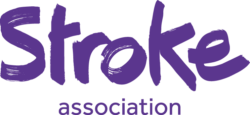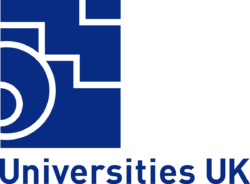Developing organisational strategy
We supported the Stroke Association to develop their new strategy through the use of 'deliberative democracy' principles. This was a year-long process, focused on supporting the organisation's development through an innovative approach to formulating strategy.
The challenge
The Stroke Association is the UK’s largest stroke charity, employing over 800 staff and supporting 60,000 stroke survivors and their families each year. With their existing strategy due to expire in 2019, and a largely new team of executive directors, including Chief Executive Juliet Bouverie, a deliberate decision was made to develop the new strategic direction in a way which helped to continue and accelerate the development of a new form of organisation.
“Our previous strategy gave us a list of things to aim at,” commented Chris Macqueen, who is responsible for the development of corporate strategy, “but it didn’t really help us decide what to prioritise or how to approach these goals.” A new approach was needed.
Our approach
The Stroke Association asked Kaleidoscope to facilitate a different kind of strategy process. Kaleidoscope helped them create a massive company-wide conversation about the future which would be based on the Stroke Association’s best self. The conversation, which took place at informal events and on internal social media, was called #WhatNext.
Drawing on deliberative democracy principles, a new team – the #WhatNext group – was created to lead the conversation and become the visible leaders of the process. “This was definitely not traditional strategy,” reflected a member of the organisation’s Executive Director’s Team. “It had whole organisation, non-hierarchical engagement buy-in from multiple levels and roles. There was a sense of progress and involvement.”
The #WhatNext group were not created to be engaged with the strategy process, but to lead an element of it: the creation of strategic principles for the organisation’s future. “It engaged a wider part of the charity than a conventional strategy development process was, there was a feeling that for the first time that the executive directors team wanted to hear what people thought,” commented a member of the #whatnext group. “It allowed for much more freedom, and that allowed the process to really challenge assumptions and come up with stronger principles.”
Across a set of learning days, Kaleidoscope supported the group to hear from a wide diversity of different voices, from stroke survivors to researchers, international counterparts to radically different organisations. The group also received individual coaching to help them lead the strategy process in a highly visible way across the organisation.
This culminated in a “principles summit” where the group articulated what they had heard from staff and stakeholders and presented a set of principles that would govern the strategy. The Stroke Association went on to develop the principles into a strategy that focused both on outcomes and capability. This ‘practicalities’ phase was led by Executive Directors Team, and principally supported by the Stroke Association internally.
The inclusive and questioning process we went through, facilitated by Kaleidoscope, proved both liberating – and challenging – to accepted norms of hierarchical leadership. It gave people the opportunity to choose for themselves how they engaged and contributed. At times it was uncomfortable for our leaders and managers, for us as the executive team and also for our Trustees. At a number of points we needed to talk about how we felt.
Hilary Reynolds CBE, Executive Director for Strategy and Research, The Stroke Association
Results
Within the Stroke Association, there is clear evidence the #WhatNext ‘way of working’ has influenced changes in how the organisation works. “We have reflected on the kinds of challenge best tackled using a #WhatNext-style approach” reflects Chris MacQueen. “We’ve identified opportunities where we plan to apply the approach (as well as opportunities where we have deliberately chosen not to). The first opportunity is likely to be the review of how we can work in a more empowering way in communities.”
The Stroke Association is much more aware of, and sensitive to, how decisions are made by leaders. There are signs of more distributed leadership decision-making, and more engagement of people affected by a decision in the process itself.
There is a greater awareness of the natural tendency to work in functional silos, and a greater commitment to reduce that tendency by defining problems where possible in terms of achieving organisation-wide outcomes and engaging cross-functional teams.
“The #WhatNext process certainly kept us busy” reflected Kyla Lacey-Davidson, Head of Internal Communications and Engagement. “Internal social media doubled, with new voices joining in. And blogs and news articles were widely read and commented upon. But we were just the conductor for the energy that began whizzing around our charity.”
The strategy development approach we took seems to have reinforced leadership development. Reflecting now (from the position of having our strategy fully owned by our Trustees), the process was key to getting to the a-ha moment – that how we operate is as important as what we do in achieving our mission.
Hilary Reynolds CBE, Executive Director for Strategy and Research, The Stroke Association



